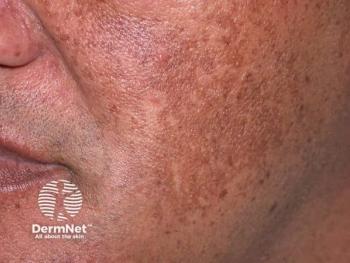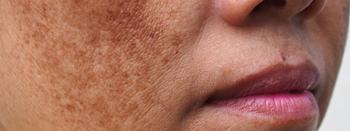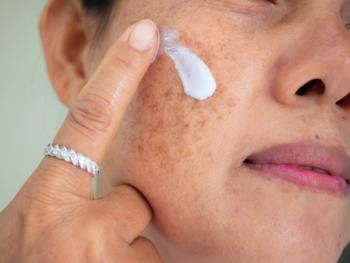
- Dermatology Times, September 2019 (Vol. 40, No. 9)
- Volume 40
- Issue 9
Your melasma questions answered
Dermatologist R. Sonia Batra sits down with Dermatology Times for a melasma Q&A.
Melasma is among dermatologic patients’ biggest complaints, making effective treatment an important part of any dermatologist’s practice.
In fact, statistics suggest that pigmentary disorders may be a more prevalent worldwide skin concern than wrinkles, according to R. Sonia Batra, M.D., M.Sc., M.P.H.
“This is a universal and really common frustrating problem,” says Dr. Batra, who practices in Santa Monica, Calif., and is a cohost on the talk show The Doctors.
Dr. Batra offers her insight on how best to treat melasma and treatment limitations in this Q&A with Dermatology Times.
DT: What is the gold standard treatment for melasma?
Dr. Batra: In my hands, it’s a combination of a cell turnover agent, a retinoid, with hydroquinone.
Hydroquinone is still the gold standard across the board. It inhibits the enzyme tyrosinase, which allows the skin to lay down pigment. But I find the gold standard to be combining hydroquinone with a cell turnover agent - whether or not it’s a triple cream that’s compounded or one that patients alternate or layer. I think those two agents have to be on board for it to be a gold standard melasma treatment.
DT: Are there new treatments for melasma?
Dr. Batra: The newer treatment that I’m using frequently is tranexamic acid. It inhibits the plasminogen-activator/plasmin system and blocks the interaction between melanocytes and keratinocytes. So, it’s a different pathway. I’ve had promising results using it.
It’s an off-label use in the U.S., where tranexamic acid is approved as a procoagulant agent for menorrhagia, or heavy periods. The screening that I always do for my patients is if they have a history of a clotting disorder or deep venous thrombosis, I don’t think tranexamic acid is safe or a good idea.
In the U.S., it is available as a 650 mg tablet. I have my patients use a pill splitter to take 325 mg in the morning and 325 mg at night. In my practice, I use it adjunctively. When someone comes in and starts any sort of product or peels or lasers for melasma, adjunctively, if there’s no risk factor, I’ll also start them on oral tranexamic acid.
There is an over-the-counter cosmeceutical with 3% topical tranexamic acid. If there is a contraindication for a patient taking it orally, I encourage them to go online and buy that.
DT: Are there certain patients for whom these therapies work best?
Dr. Batra: I think treatment works best when the melasma is newer. I have a much harder time clearing melasma when it’s long-standing - (ie,) it has been around 20-plus years.
In people who are more deeply pigmented, it usually takes longer to see results. Fairer skin patients are a little more likely to respond to topicals.
DT: What treatment challenges have you experienced?
Dr. Batra: I think the hardest aspect of melasma treatment is recurrence. I practice in Southern California where people get a tremendous amount of ongoing ultraviolet exposure. While it’s more likely to recur in a sunny environment, it tends to recur in most geographic areas.
The biggest difficulties are achieving immediate efficacy because people have ongoing sun exposure, and long-term clearance, because it tends to recur with time no matter what.
DT: Are there limitations to treatment strategies?
Dr. Batra: There is no permanent cure for melasma. I think it results from a combination of hormones, genetic predisposition, ultraviolet exposure, and it tends to be chronic. The limitation is while we often improve melasma, we have to educate our patients that this is something that tends to recur and needs ongoing maintenance and ongoing sun protection. Just because it fades doesn’t mean that it’s not going to come back.
DT: What do you tell patients?
Dr. Batra: I think it’s important that patients understand this is really a long-term strategy. It takes time to see results and those results need to be maintained. When I counsel patients before we embark any sort of treatment plan, I will say that this requires ongoing maintenance. It’s not something that you’re going to do one procedure and it’s done. I tell the patient: You, on your own, have a huge responsibility to maintain these results by using strict sun protection and an ongoing fading cream, day to day.
DT: What are your key takeaway messages to colleagues?
Dr. Batra: Using a combination of approaches - topicals, orals and in-office procedures - often yields the best improvement. But melasma is a condition that doesn’t have a cure, so it requires patience and an ongoing relationship with the patient, in which patients understand that they need to maintain and continue at-home efforts to see the best results.
Disclosures:
Dr. Batra reports no relevant disclosures.
Articles in this issue
over 6 years ago
Genetic test could rule out melanoma diagnosisover 6 years ago
Atopic dermatitis treatment advances on psoriasis researchover 6 years ago
What are my liabilities with telemedicine?over 6 years ago
Desire for clearance high in atopic dermatitis patientsover 6 years ago
Dermatologist discusses permanent eyeliner, microbladingover 6 years ago
New rosacea therapies show promiseover 6 years ago
Cheek swab IDs genes linked to non-melanoma riskover 6 years ago
Sleep problems common in psoriasisover 6 years ago
Let’s talk about melasmaover 6 years ago
Skincare advice across the generationsNewsletter
Like what you’re reading? Subscribe to Dermatology Times for weekly updates on therapies, innovations, and real-world practice tips.

















